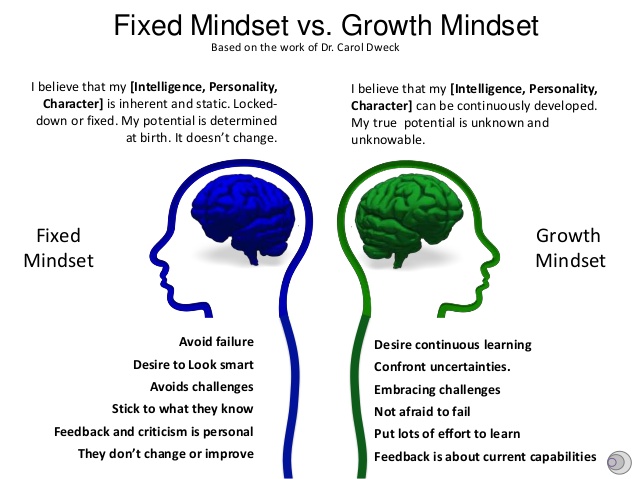There are many Agile methodologies out there and many process flows and documentation on how to work. However, those processes are the byproduct of a culture; they’ve been documented after the fact, rather than created as a mandate and sent to the team. If you want to successfully implement Agile, it starts with your C-suite. Top-down support for a shift in the organizational culture is a requirement. Period. Then everyone under them and all the managers under those people and all the employees under those managers need to be empowered to begin making changes to the way they work.
Before you try to be “agile”…
Shifting your entire organization to an Agile way of thinking and operating is a big deal and it is not going to happen overnight (or even after the first several projects). Make sure you’re ready before you take the leap. Ask yourself these questions: Are you (and, specifically, your management team) ready to:
- Give up a significant amount of decision-making power to your teams?
- Stop micromanaging?
- Embrace experimentation, risk, and failure?
- Accept that change happens all the time and is a necessary part of the process?
- Break down the walls surrounding your Ivory Tower, in favor of a culture of transparency?
- Be honest with yourself and your team when things didn’t work or when you can’t meet a deadline?
The team members need a level of maturity and experience for them to be able to discuss issues and decide on appropriate measures. A junior member of the team will need a significant amount of help, advice and guidance to make the right decisions. Even experienced team members must become comfortable when making decisions rather than carrying out instructions passed down by management. It takes time to reach this point and the early stages will need some support, mentoring and guidance.
Quinton Pienaar, CEO of Agilitude
What Agile Isn’t…
If you’re reading this, I assume you’ve probably already bought into the idea of “agile software development”, but as Agile methodologies proliferate, there are a couple very important things to point out:
- Agile is not “one-size-fits-all”. Every organization has to figure out what works for them, which means that no two organizations are ever going to operate identically. Everyone adapts the core tenants into tactics and processes that work for them.
- Agile is not “we’ll figure it out as we go”. Before you can even begin implementing an Agile working cadence, you will need to define–in no uncertain terms–a host of components and practices.
- Agile is not an excuse for not having a roadmap. The “roadmap” may look different in Agile than what you’re used to, but Agile organizations must know where they are going if they want to be successful. Recognizing that change is part of the process is different from pivoting in a new direction every sprint.
- Agile is not building without specifications. It is imperative that your teams understand and are aligned to the “why” and the “how”. Discovery, requirements gathering, and user insights don’t disappear or get punted to the end of the release cycle.
Agile at its Core
If you cut through the dogma and all the different variations that exist, you will find that Agile, at it’s core, is all about continually finding ways to improve. That may sound simple, but it’s actually a very loaded statement with several embedded assumptions:
- Change is welcome and commonplace
- Failure is appreciated for what we learn from it
- Organizations are flat
- Teams are empowered
It’s not about having the perfect daily standup or flawless estimation, it’s about creating a culture where the right thing happens more often than not.
Plans are worthless, but planning is everything.
Dwight D. Eisenhower
Mindset Shifts for Organization Transformation

Profit to Purpose
Executives in large companies have a historically been held accountable to create shareholder value. Therefore, they’ve focused on creating shareholder value. That focus, though, will often exclude the user or put the business first and this can, over time, result in a negative impact to shareholder value because users go to another provider who is creating more value for them.The goal of an creating Agile culture or implementing Agile methodologies is not to make money. Making money is a byproduct of focusing on the user and delivering value. The more value we deliver (quickly) to users, the more value we will ultimately create for shareholders.
Hierarchies to Networks
Product decisions are no longer handed down as mandates to multiple teams that each own a different piece of the experience architecture. Instead, teams are erected around feature areas and they own that entire experience from how the front-end is rendered to how the databases are populated behind the scenes.
Controlling to Empowering
That team should be empowered to build and deliver the entire end-to-end experience for their feature area. Reduce the dependencies on other teams and reduce the need to go up the organizational ladder for approval. Give your teams the support they need to make decisions quickly and move forward.
Planning to Experimentation
Everything from your internal processes to the features you are delivering to users becomes an experiment. The quicker you release something into the real world, the sooner you can get feedback and improve on it. This means there is no longer one, single, unalterable plan. Rather, there is a unified vision that everyone is working towards and each team makes whatever tweaks they need to, base on feedback, in order to help us realize that vision sooner.
Privacy to Transparency
It would be impossible to support your team and empower them to operate efficiently on their own without being completely transparent with them. There may be a few obstacles in the beginning and young Agile teams will need help and support. But withholding information or allowing bureaucracy to stand in between your teams and the information they need to make decisions will only ensure that Agile will not work in your organization.
Fixed to Growth
It is critical that everyone in the organization actively has a Growth Mindset; of–for those who don’t–they they are working on developing a Learning Mindset in their individual lives. It’s difficult to tolerate failure or listen to other and be honest if criticism is a reflection of who they are as a person, rather than where they are at that moment.

3 of the top 5 challenges experienced when adopting and scaling Agile relate to organizational culture:
Company philosophy or culture at odds with core Agile values (63%)
Lack of management support (45%)
General organization resistance to change (43%)
11th Annual State of Agile Survey
Agile Management
In traditional organizations, the role of the management function is to identify the things that should be done, communicate that to the employee, and ensure that the employee follows through according to instructions. The role of the employee is to follow directions as given, trust the judgement of management, and ensure work is done on time and as prescribed.
In Agile, these roles change quite a bit. The employee is responsible for connecting with users and understanding user needs, then translating those into requirements. It’s the manager’s role to trust the judgement of the employee and to support them in any way possible.
In organizations where there is a fundamental belief in the effectiveness of the top-down, “the manager is the boss” approach, it’s difficult to implement Agile effectively. There will always be friction between the different goals and approaches. As a result, the adoption of Agile is limited to the team level and risks being incomplete and dysfunctional, producing little if any improvement for the organization.
